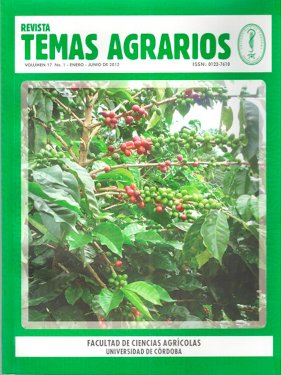Organizations in the adoption of standards subsector horticulturein México northwest
Las organizaciones en la adopción de estándares en el subsector hortícola del noroeste de México

This work is licensed under a Creative Commons Attribution-NonCommercial 4.0 International License.
Show authors biography
The adoption of grades and standards in export markets has become widespread. Has been not defined the role of the organizations in the adoption of standards and there is not clarity of the contribution of the organizations to complete the process. The objective of this work was to identify the role of different actors in the processes of implementation and adoption of standards in horticultural producers in the northwestern region of Mexico. With the field information through an econometric estimate, a Logit model was developed that allows determining the contribution of organizations in the process of adopting standards. The work concludes that the trading houses make the biggest contribution to the adoption process with training, technical assistance and inputs financing. Producer organizations are committed in a particularly important representation in the negotiations and finally the public institutions are contributing to a lesser way with the adoption process
Article visits 634 | PDF visits
Downloads
- Avendaño, B. 2006. Impacto de la Iniciativa de Inocuidad Alimentaria de Estados Unidos En las Exportaciones de Hortalizas Frescas del Noroeste de México. Región y sociedad, ISSN 0188-7408 18(36):7-36.
- Bain, C. 2005. Third-party certification in the global agrifood system. Department of Sociology, Michigan State University, 422
- Berkey Hall, East Lansing, MI 48823, USA Food Policy 30(2005):354–369.
- FAO. 2002. Organización de las naciones unidas para la agricultura y la alimentación) en Httpp//www.fao.org [noviembre de 2010].
- Domencich and McFadden 1975. Illustrates the conceptual flexibility and computational drawbacks of this approach. Journal of Economics.
- Gujarati, D. 2006. Econometría, México, MacGraw Hill, 4.
- Henson, S. and Hensman, M. 1998. Food Safety Regulation and the Firm. Understanding the Compliancen Process. Food Policy, 23(1):9-23.
- López, L. 2004. Cambios en la estructura de comercialización de las hortalizas mexicanas de exportación: el mercado detallista. Tesis de doctorado Universidad Autónoma de Sinaloa. p200.
- Madala, G. 1996. Introducción a la econometría, México, Prentice-Hall 2.
- McFadden, D. 1973. Conditional logit Analysis of Qualitative Choice Behavior. En P. Zarembka, Frontiers in Econometrics. Nueva York, Academic Press.
- OCDE 1999. Organización para la Cooperación y el Desarrollo Económico Food Safety and Quiality, Trade Considerations Paris.
- Pindyck, R. y D. Rubinfel 2001. Econometría: Modelos y pronósticos, México, McGraw Hill. Econometría, 4.
- Vagneron, I. 2006. Impacts from FQ & S regulations on social exclusion in agrichains (intro paper) En Memorias del seminario impacto de las normas internacionales sobre seguridad y calidad de los alimentos en los sistemas agroalimentarios. Buenos Aires Argentina.




















